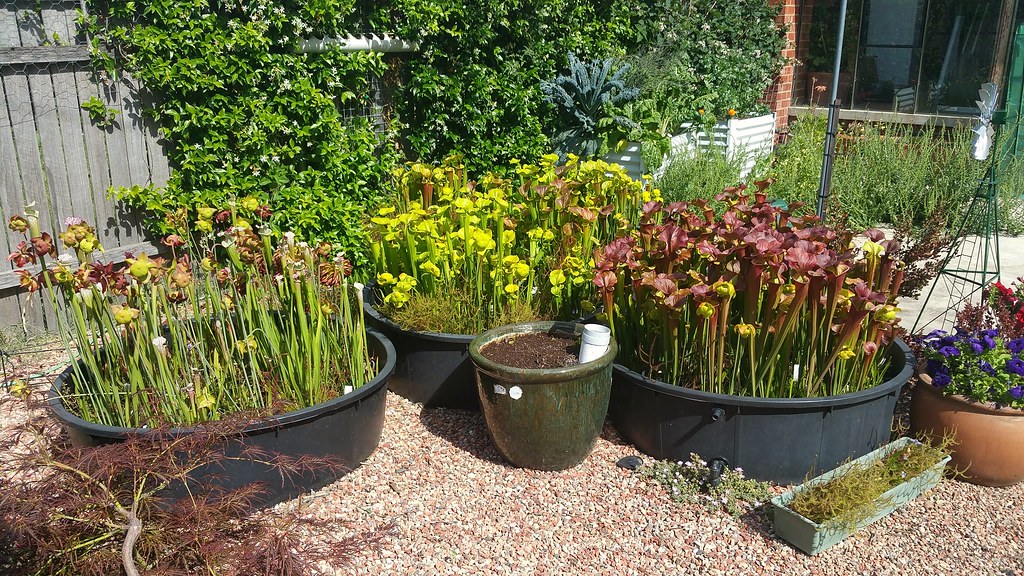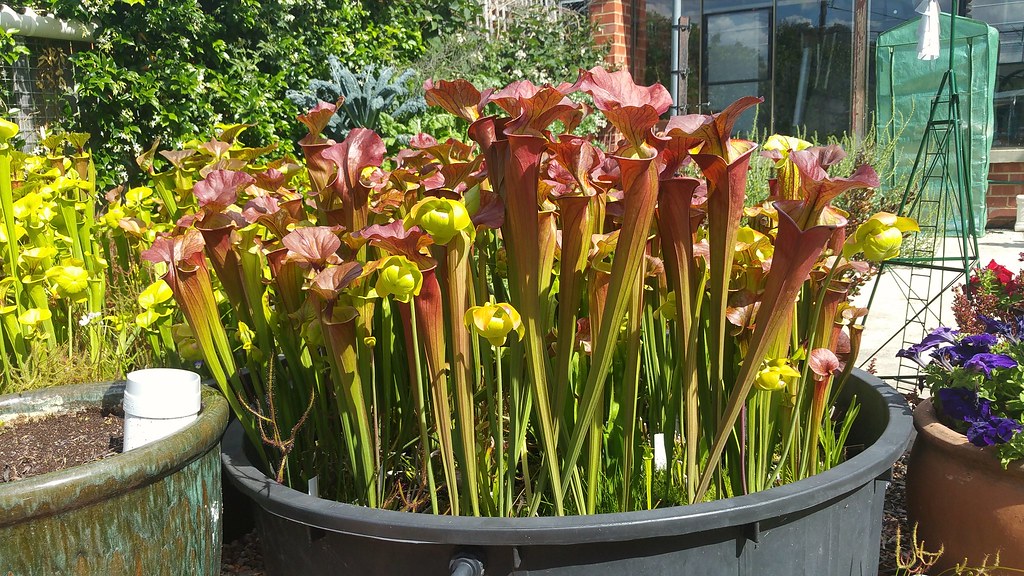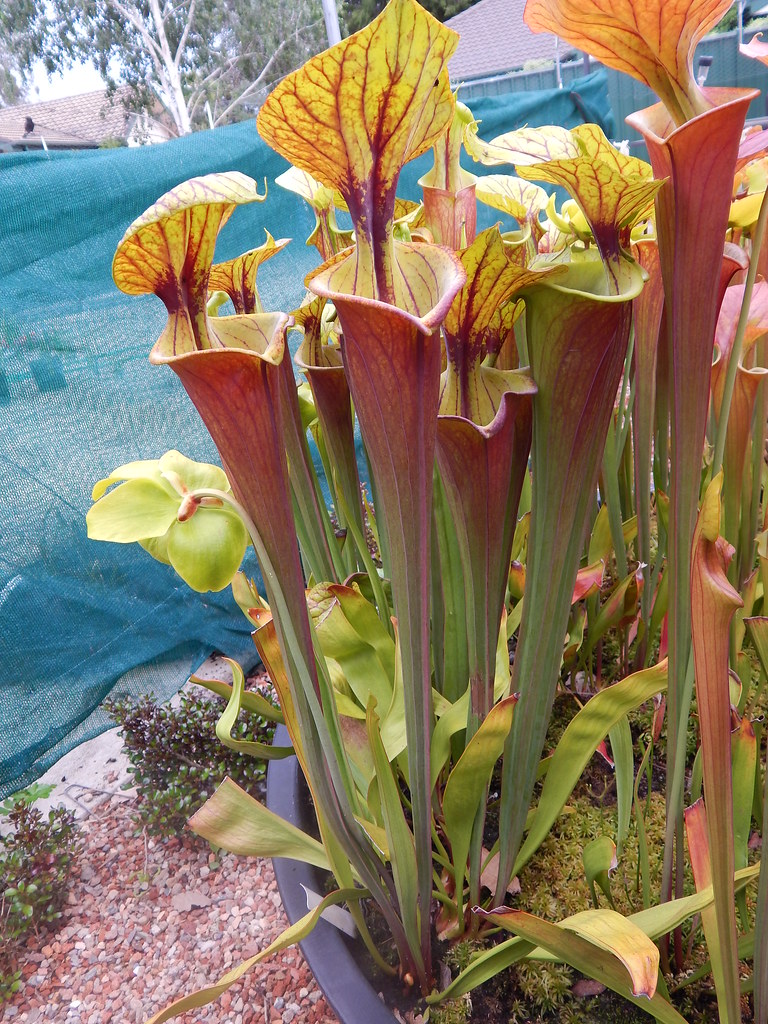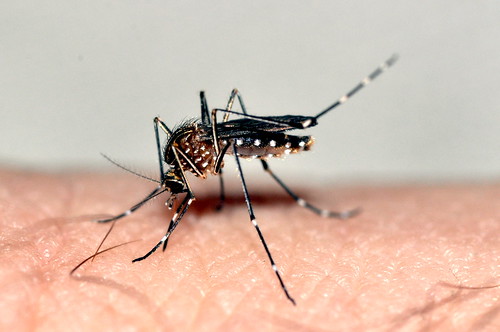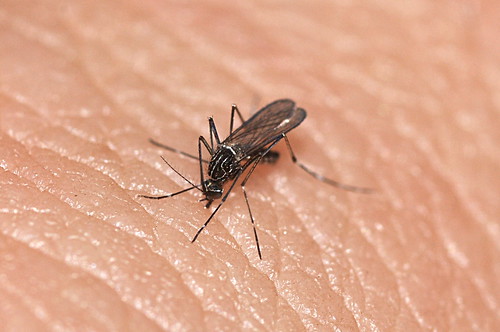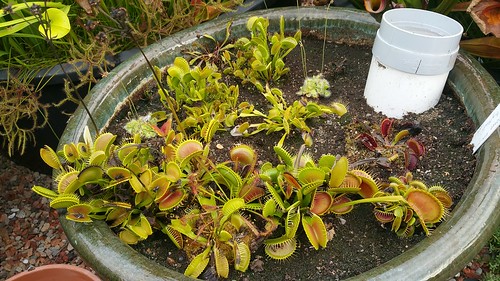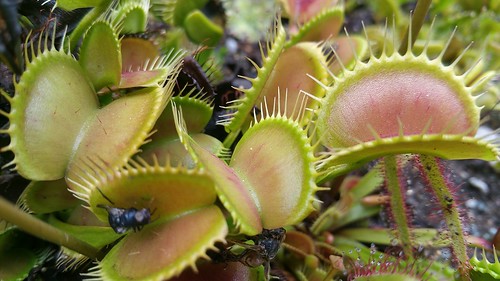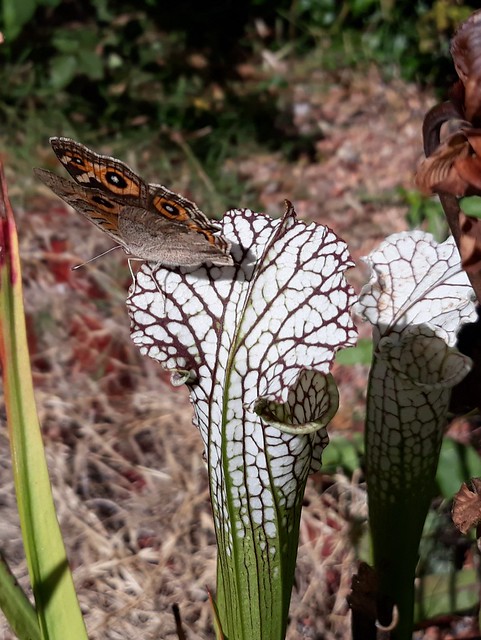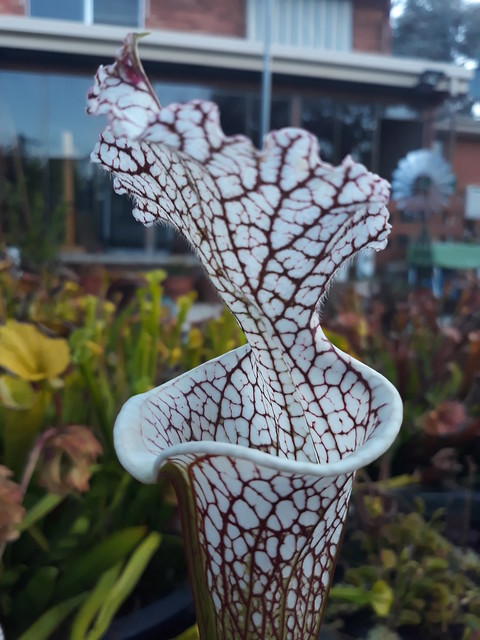Yes, I’ve neglected the blog again, and the season has finished up with a handful of early blog posts to speak of. So here is the low-down on what happened this Summer, and what will be happening this Winter.

The plants did ok, but just ok.
The best were the Sarracenia flava var. atropurpurea, but they were nowhere near as good as they were in the bog gardens – compare them with the below shot of the same plants in a bog garden:
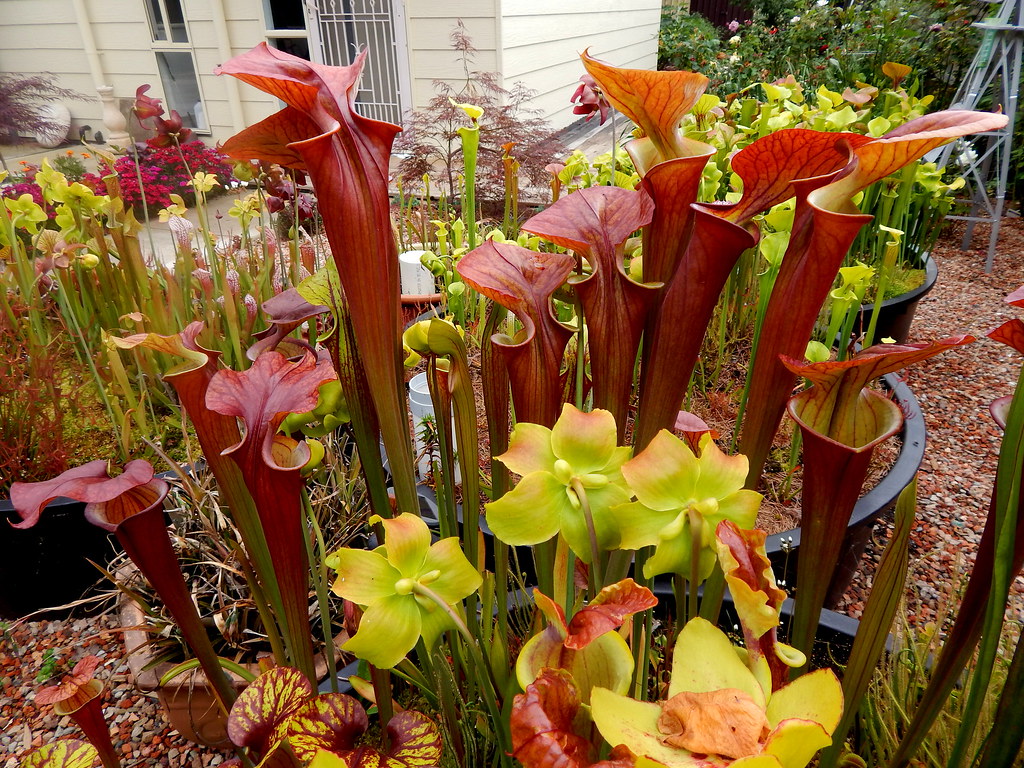
Virtually every plant was a shadow of their former bog garden glory. As this was their second season post repotting, it looks like the trend has been set – Sarracenia just don’t do as well in pots under my current conditions.
Here’s a comparison of the plants that had the biggest loss of colour – S. flava var. rubricorpora – between how they looked in pots this year (above) and in the bog garden two years back (below).
The colours in the bog gardens were amazing, whereas they could have been mistaken for S. flava var. flava in the pots. Other than the change to pots, their growing conditions were identical. Clearly, the plants are not happy being in pots. Given how depressing the plants looked, I didn’t post anything.
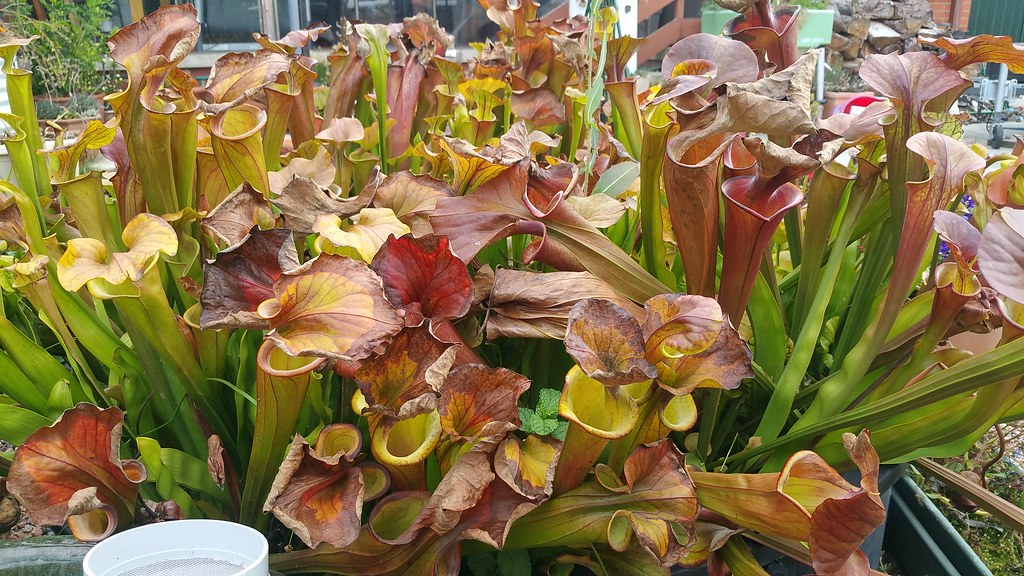
Summer this year was hot, and arrived a little early. This resulted in the S. flava being over and done before Christmas, with the plants really looking good for a week or two – a real let down. But at least everything caught a lot of insects when the going was good, so the rhizomes are in good condition despite the lack of colour on the pitchers. The temperatures really bleached out the pitchers, again much more so than when they were in bog gardens. Pots just don’t have the same thermal mass, I suspect.
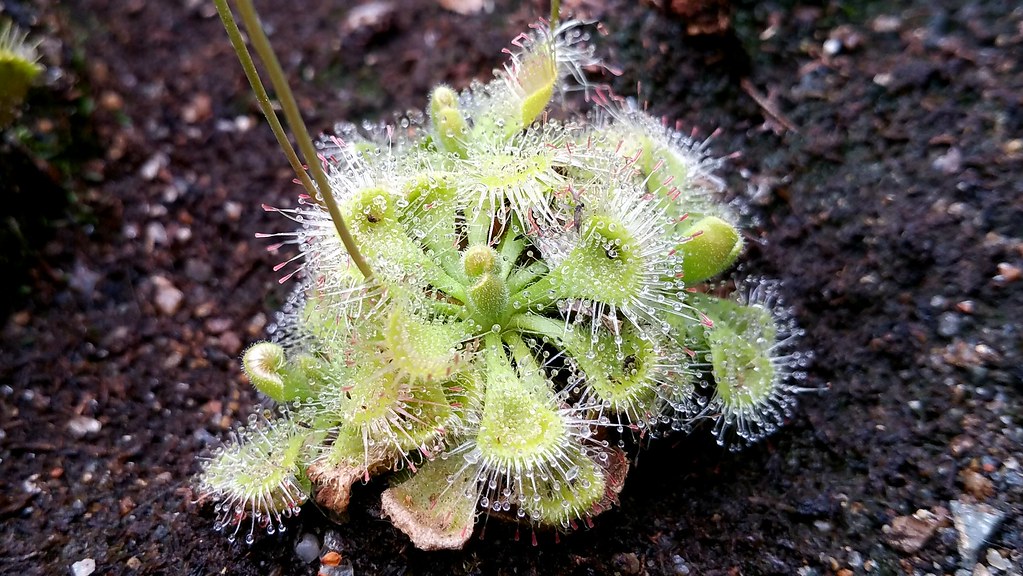
The new year brought a very nice surprise – an announcement that the Australasian Carnivorous Plant Society (which I used to frequent when we would go to Sydney more regularly) was opening meetings in Canberra. The first meeting was at fellow Sarracenia grower Ross R’s place for a BBQ and much discussion of carnivorous plants and how the season had been in the Canberra area. I’ve been to every meeting since, and even gave a presentation on mosquitoes and how to control them in CP setups. In short – growing numbers of Sarracenia in trays will breed large numbers of Aedes and Culex mosquitoes, especially the Common Backyard Mosquito, Aedes notoscriptus. Here are some photos of that species biting me:
Despite them being bloodsuckers, they are rather beautiful insects when seen under magnification. As far as control goes, either grow plants requiring a water tray in a bog garden following the mosquito-proofing suggestions I made elsewhere on the blog, or use chemicals. I use either NoMoz pellets (an insect growth regulator) or Aquatain (a surface treatment that suffocates mature mosquito larvae and pupae). FOLLOW THE LABEL DIRECTIONS when using any chemical! Neither product has caused harm to my plants, and both can be brought at Bunnings, albeit with Aquatain sold under the name Mosquito Drops. One thing that does not work – and is actually counterproductive – is letting water trays dry out (smaller trays can be emptied out, but you need to be on top of it for reasons that about to become clear). The reason it is counterproductive is because Aedes mosquito eggs are drought resistant, and actually need to dry out before they will hatch. They are perfectly adapted to water trays, and even if you dump out the water, more larvae will hatch as soon as you refill them. I even busted the myth that CPs are super mosquito catchers – a Byblis brought into the AUSCPS meeting I spoke at (ostensibly as proof that CPs catch loads of mosquitoes!) proved to have two mosquitoes and several hundred fungus gnats (Sciaridae) snared on the leaves! I must have done a good job, as I got a number of people come back to me saying how interested they now were in mosquitoes – and not because they were wanting to kill them off! Last meeting, I was asked by Ross R to dissect some of his Sarraenia pitchers to ID what insects were in them – lots of fun!
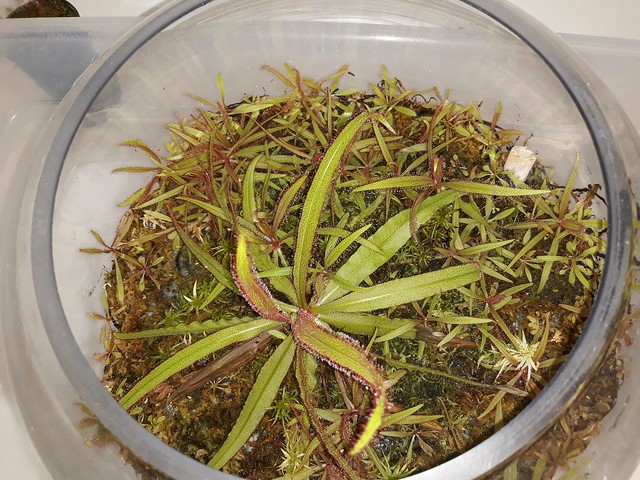
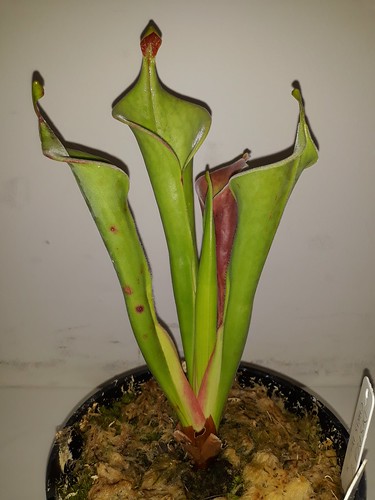
Some lovely plants have made their appearance at the AUSCPS meetings here, with loads of plants being offered for sale. Above are some of my favourites – a bowl of Drosera adelae grown by Barry, and a Heliamphora. Owen O’Neil (Strange World Carnivores) also brought in loads of Sarracenia leucophylla and their hybrids, plus some S. alabamensis. For those in Canberra, the meetings are great to come along to!
A sad loss this season was virtually all of my flytraps due to my mishandling them, which was as depressing as the poor pitcher colouration. I had planned to put them into a minibog, but underestimated how long the sealant would take to dry. That meant the plants had to sit in a bucket of water for a few days. When I planted them out, they rotted. Thanks to Owen and members of the AUSCPS here (and a couple of judicious purchases), I have the flytrap collection mostly back, with a few extra forms. I was however very relieved to find a plant of Jessica & Peter Biddlecombe’s “Red Crescent” flytrap, which must be the only piece of it left in cultivation! Fortunately it got some size on quickly before winter, so I am confident it will not be lost to history. The only plant I am still in need of is John Creevey’s excellent selfing of Pink Venus.
Autumn brought out the Sarracenia leucophylla in their white-topped glory. This is their second year with me and they are looking great (thanks again Owen!!!).
But I can’t help think how much better they would probably look if grown in a bog garden.
As of last Friday came the first frosts – a relief after a record breaking Summer. We are indeed due for ongoing frosts nearly daily now. Fortunately, the S. leucophylla still look very good until well into winter here.
Outcomes from this season – I am going back to bog gardens. IME, if you want to grow the best Sarracenia possible, nothing beats a well prepared and well-sited bog garden. Sure its some hassle and a lot more effort to set up, but putting in the hard work up front means rewards of beautiful plants for years afterwards with little to no effort. I’ll make sure lots of photos are taken, so watch this space.
Till then,
JN.
